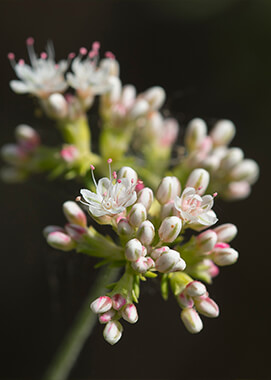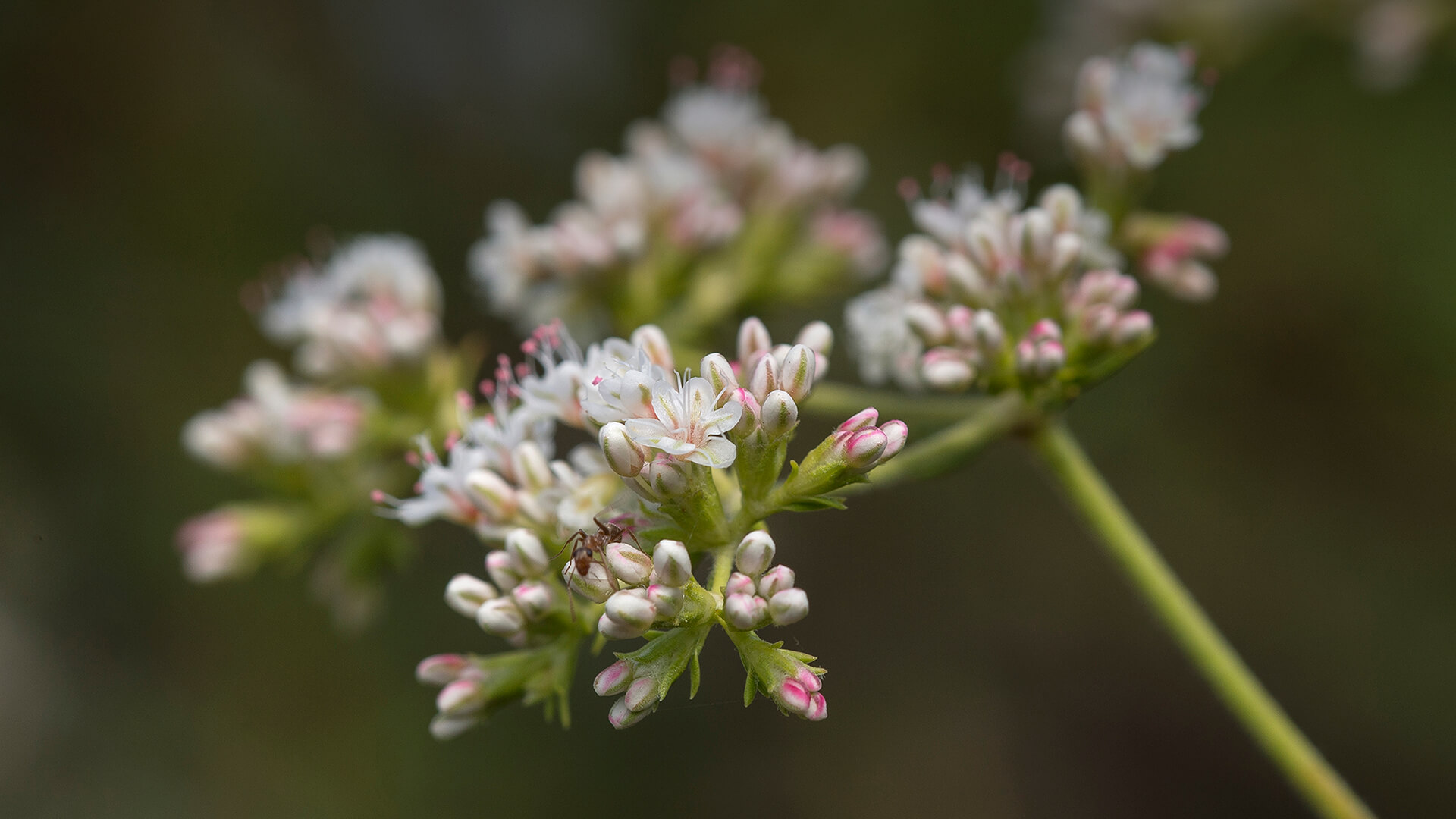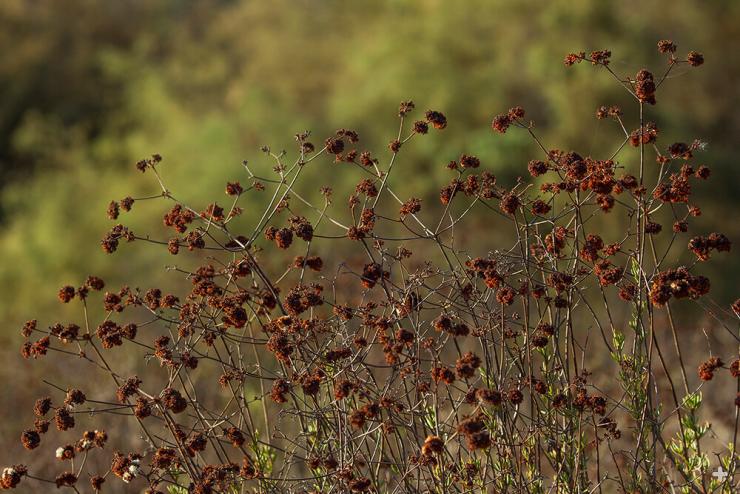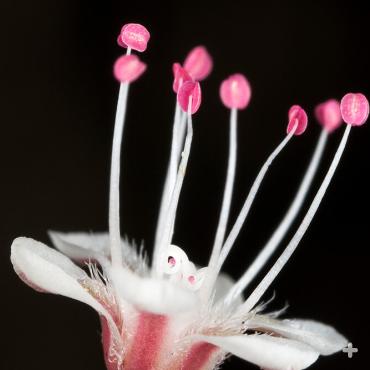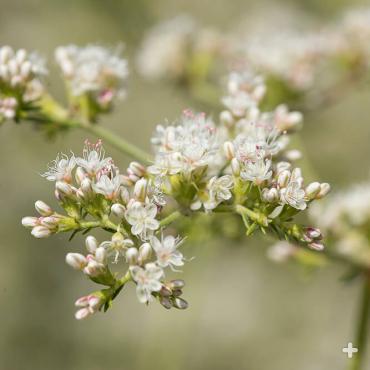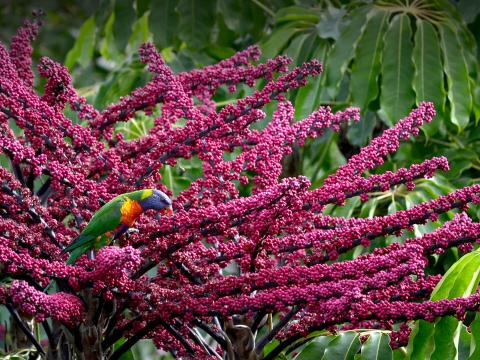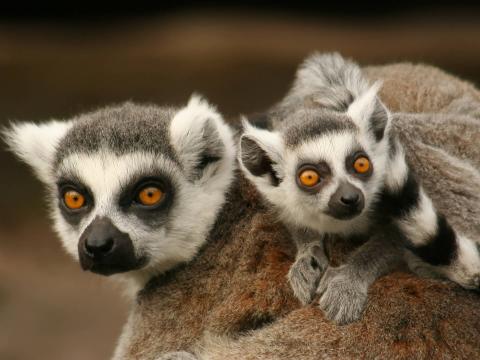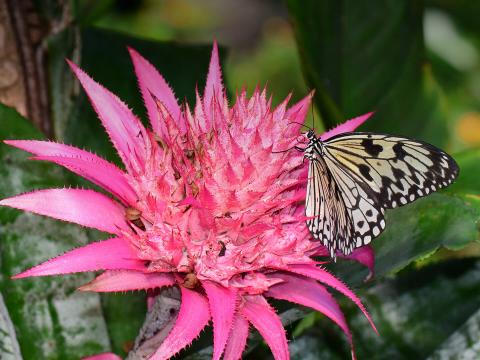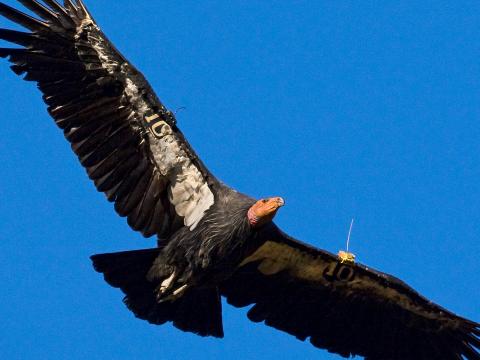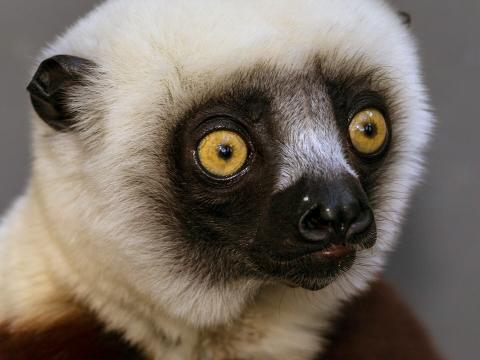Wild Buckwheat
- DIVISION: Tracheophyta
- CLASS: Magnoliopsida (dicotyledons)
- ORDER: Polygonales
- FAMILY: Polygonaceae
- GENUS: Eriogonum
OVERVIEW
Scrubby, dry slopes, washes, and canyons of the southwestern US and northwestern Mexico are home to a distinct plant community known as coastal sage scrub. Average rainfall here is only about 10 inches (25 centimeters), but a foggy marine layer creeps into foothills and canyons, providing some moisture for the plant community.
Native buckwheats are keystone species of this community. They support a wide diversity of insects, birds, and butterflies as they grow alongside sagebrush, sages, and other native plants such as manzanita, yucca, and coyote bush. But coastal sage scrub has disappeared from most of its original range, replaced by urbanization and agriculture. In fact, most of California’s population lives in former coastal sage scrub habitat: think of Los Angeles, San Diego, Riverside, and Orange counties. Fortunately, some areas of coastal sage scrub, including the Safari Park Biodiversity Reserve, have been conserved.
CHARACTERISTICS
An evergreen shrub, buckwheat can grow as an erect bush or a brambling mound, extending its many lithe branches. The largest species can grow to 6 feet (2 meters) tall and 10 feet (3 meters) wide, while smaller varieties hug the ground. California buckwheat E. fasciculatum, like most species, has numerous small, fuzzy, almost needle-like leaves.
Winter rains mark the beginning of a growth spurt for native buckwheats, which continue to grow throughout the spring. Flowering begins in April, and soon a profusion of frilly flower clusters covers the shrub. Each cluster can be 6 inches (15 centimeters) wide, but individual flowers are tiny. Most buckwheat flowers are white, cream, or shades of pinkish, but some types, like sulphur-flower buckwheat E. umbellatum, bear bright yellow blossoms. Summer through fall is hot and dry, and, buckwheat goes dormant. Pale flowers eventually darken to rust, and the plant may even drop some of its needle-like leaves in an effort to conserve water.
CULTIVATION
Where they are native, most buckwheats are tough and easy to grow. In general, they tolerate poor soil, require very little maintenance, and—once established—need little to no supplemental water. California buckwheat E. fasciculatum thrives in Southern California when planted in a well-draining site in full sun. It attracts bees, birds, butterflies, and beneficial insects. Buckwheats are a good choice for water-efficient landscapes, rock gardens, slopes, wildlife gardens, and habitat restoration.
CONSERVATION
The Safari Park maintains and protects 900 acres of adjacent natural habitat, including large expanses of coastal sage scrub—home to 24 species of mammals, 179 bird species, 28 reptile species, and 4 amphibian species. This Safari Park Biodiversity Reserve forms a key part of the larger system of interconnected protected areas designated to conserve San Diego’s unique regional biodiversity over the long term. Scientists at San Diego Zoo Wildlife Alliance have been intensively monitoring wildlife populations on the reserve for more than 10 years. We take an active role in restoring the area, which is slowly recovering from the impact of the 2007 wildfires. To date, we have planted thousands of cactuses and young shrubs as part of our efforts to restore fire-damaged areas of the reserve.
San Diego Zoo Wildlife Alliance maintains a native seed bank. In addition to protecting and storing seed from rare and threatened species, it holds seed that can be used to restore coastal sage scrub.
By supporting San Diego Zoo Wildlife Alliance, you are our ally in saving and protecting wildlife worldwide.
